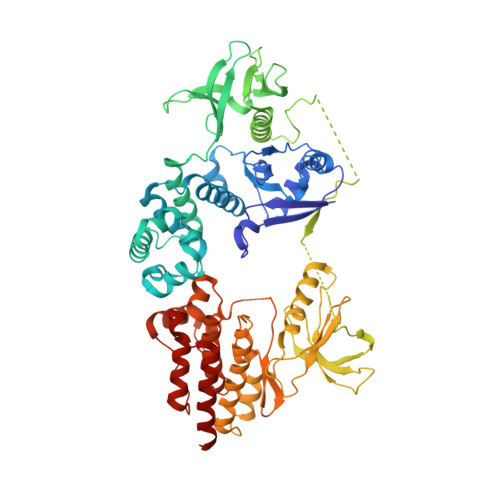Structural Basis for the Autoinhibition of Focal Adhesion Kinase.
Lietha, D., Cai, X., Li, Y., Schaller, M.D., Eck, M.J.(2007) Cell 129: 1177
- PubMed: 17574028
- DOI: https://doi.org/10.1016/j.cell.2007.05.041
- Primary Citation of Related Structures:
2J0J, 2J0K, 2J0L, 2J0M - PubMed Abstract:
Appropriate tyrosine kinase signaling depends on coordinated sequential coupling of protein-protein interactions with catalytic activation. Focal adhesion kinase (FAK) integrates signals from integrin and growth factor receptors to regulate cellular responses including cell adhesion, migration, and survival. Here, we describe crystal structures representing both autoinhibited and active states of FAK. The inactive structure reveals a mechanism of inhibition in which the N-terminal FERM domain directly binds the kinase domain, blocking access to the catalytic cleft and protecting the FAK activation loop from Src phosphorylation. Additionally, the FERM domain sequesters the Tyr397 autophosphorylation and Src recruitment site, which lies in the linker connecting the FERM and kinase domains. The active phosphorylated FAK kinase adopts a conformation that is immune to FERM inhibition. Our biochemical and structural analysis shows how the architecture of autoinhibited FAK orchestrates an activation sequence of FERM domain displacement, linker autophosphorylation, Src recruitment, and full catalytic activation.
Organizational Affiliation:
Department of Biological Chemistry and Molecular Pharmacology, Harvard Medical School, Boston, MA 02115, USA.















